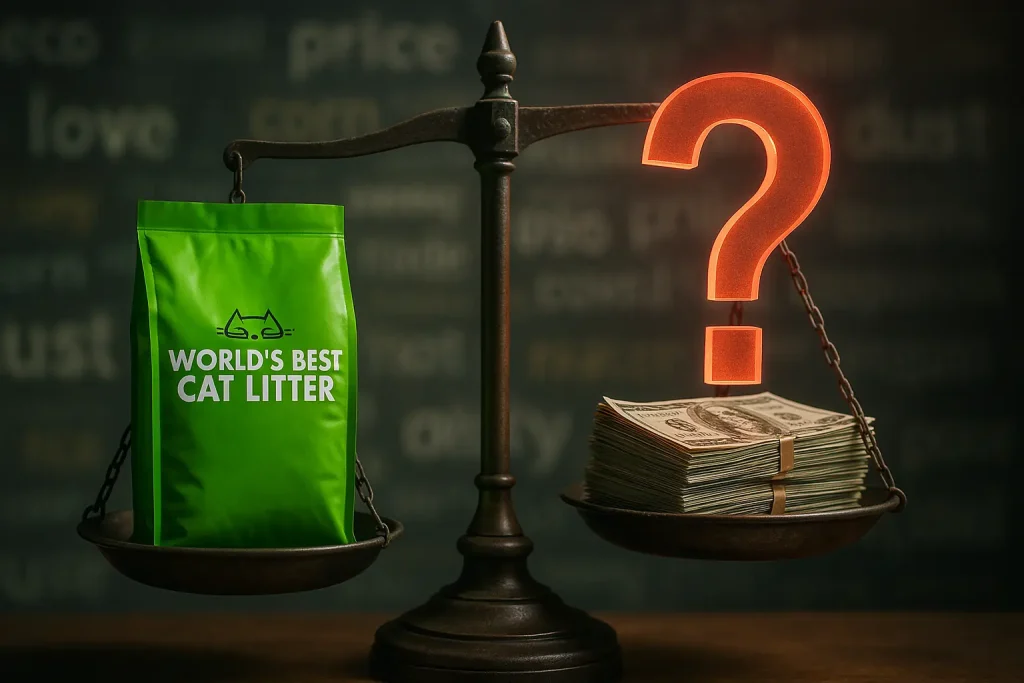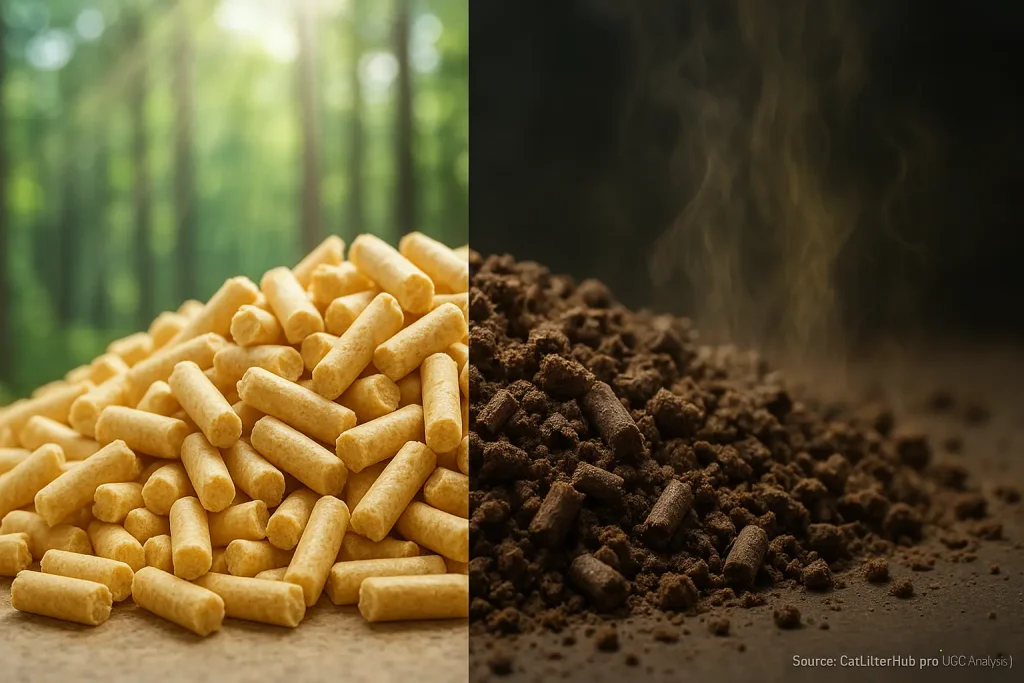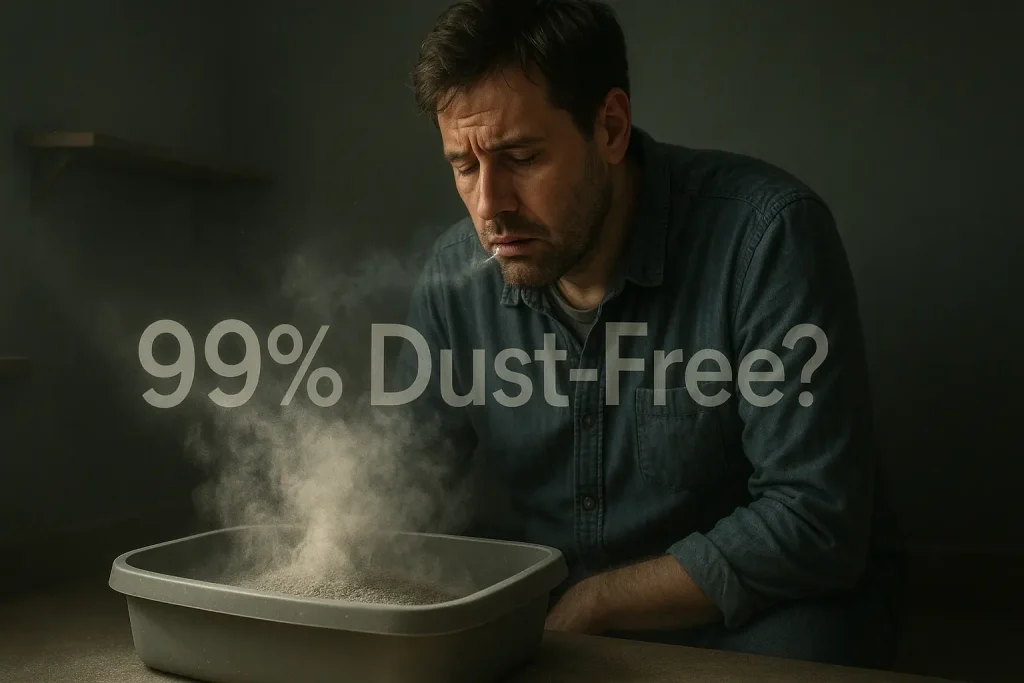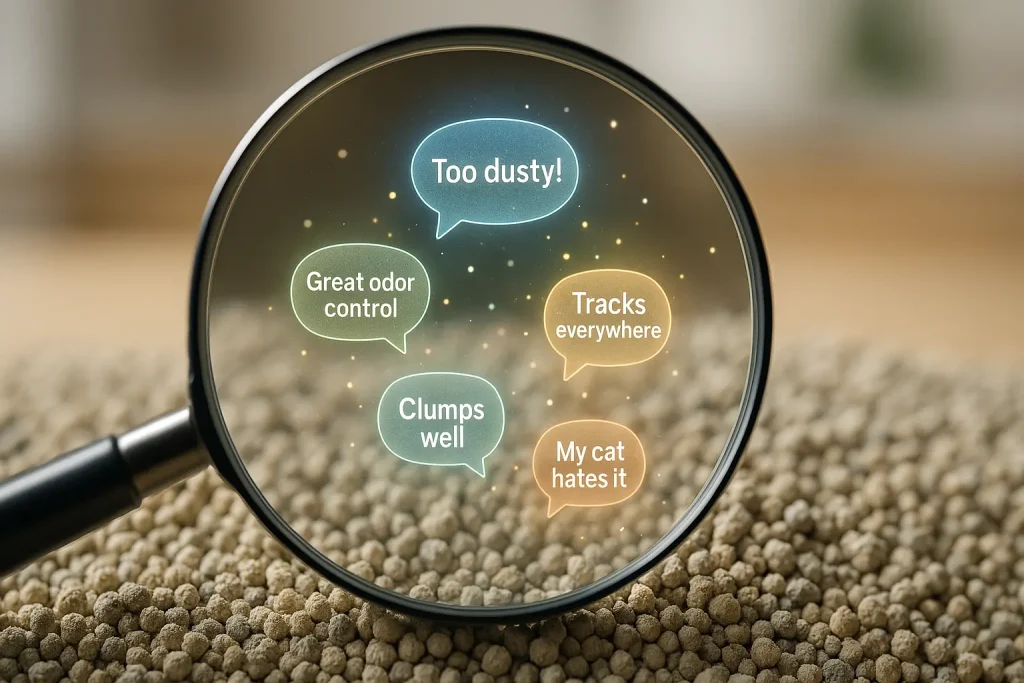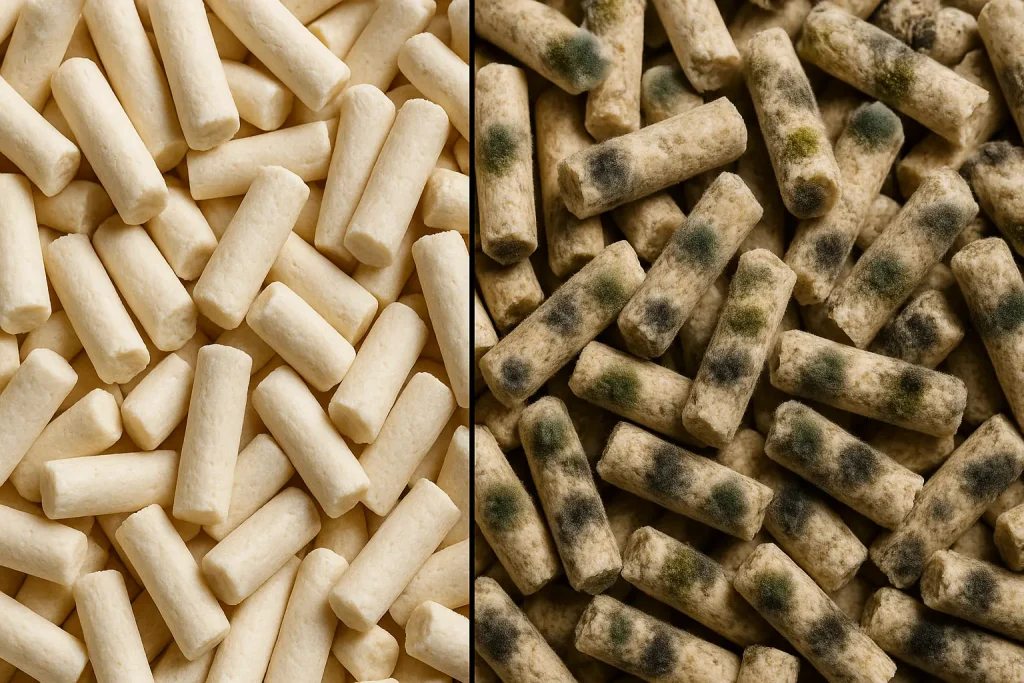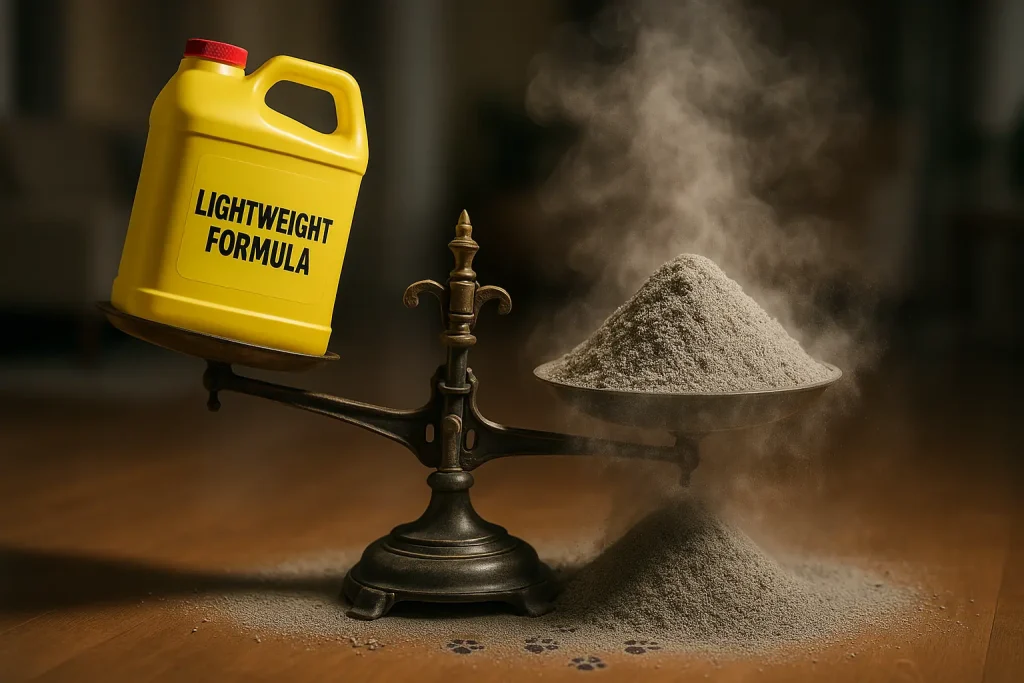The "Off-Grid" Litter Scene: When Store-Bought Isn't an Option (Or Just Isn't Enough)
Ever been in a pinch, staring at an empty litter bag? Your cat looks desperate. Or maybe store-bought options just don't satisfy you anymore. Cost, sudden unavailability, or pure curiosity often pushes owners toward unconventional litter ideas. They venture "off-grid."
Cat Litter Hub now delves into this fascinating realm of DIY cat litter. We've sifted through extensive user-generated content detailing these experiments. Our analysis focuses on what materials cat owners actually try. This is an exploration of user ingenuity, not a list of recommendations. Many owners share their trials, their successes, their failures.
What do these user experiences truly reveal? Our deep dive into countless owner stories uncovers a mixed bag. Some "off-grid" solutions demonstrate remarkable resourcefulness. Other attempts? Well, they provide cautionary tales. Many unconventional materials carry hidden risks, often discovered only through real-world use and shared by fellow cat parents.
Sand as Litter: User Tales of Desert Mirage or Practical Solution?
The beach in the litter box. Sounds almost poetic, right? Many cat owners, our analysis of user discussions shows, chase this vision. They try plain sand as litter. Extreme low cost is a huge driver. A desire for naturalness tempts many owners.
Some cats accept sand readily. Users frequently report this. The fine texture often pleases felines. It mimics their natural digging preferences. And the cost? It can be virtually free. This appeals to owners with easy access to play sand or construction sand, though beach sand carries other risks.
The practical reality often shatters this sandy dream. "It tracks EVERYWHERE" is a constant refrain in user feedback. Tiny grains invade every corner. Odor control? User experiences suggest sand offers very little. Ammonia smells quickly become a problem. The sheer weight of sand is another major drawback many discover. Hauling bags or scooping heavy, wet sand tests patience. Hygiene emerges as another significant concern voiced in countless reviews; sand doesn't clump or effectively neutralize bacteria, creating a messy, potentially unsanitary box.
So, what is the verdict from cat owners? Most who try sand eventually abandon it. The dream of a cheap, natural litter often becomes a practical nightmare. Our analysis of user journeys indicates sand is typically a short-lived experiment. The significant downsides usually outweigh any initial benefits for sustained use.
Soil & Peat Moss: Digging in the Dirt - Genius or Germ Fest?
What seems more natural than actual earth? Some cat owners consider this. They experiment with potting soil. Or they try peat moss. Their hope is an ultra-eco, ultra-cheap litter solution.
Cats possess strong digging instincts. They might not object to soil. It feels natural to them. Some user accounts note their cats seem perfectly content with it initially. This can appear promising. For a while.
But this is where the 'genius' idea often transforms into a 'germ fest,' according to numerous user experiences. Soil and peat moss can harbor unseen bacteria. Parasites are another risk. Molds can flourish, especially when mixed with cat waste, creating significant hygiene concerns. What about odor control? Users consistently report it is practically non-existent. And the mess... imagine muddy paw prints tracked all over your home.
The overwhelming user consensus our analysis uncovered is stark. While a cat might use soil or peat moss if no other option exists, it is a poor indoor choice. Many who have tried this quickly warn others. It is generally an unhygienic, messy, and potentially unsafe solution for both the cat and the household.
Wood Shavings & Sawdust: From Workshop Floor to Litter Box Floor?
Do you have access to a wood workshop? Or perhaps cheap animal bedding catches your eye. Wood shavings or sawdust can seem like a thrifty litter hack. Users have certainly tried this. The journey from workshop floor to litter box floor is one many explore.
Some users report decent initial absorbency. Finer sawdust, in particular, absorbs moisture well, according to feedback. A natural woodsy scent is another early attraction for a few. Plus, the cost is low. Sometimes it is free.
However, the downsides multiply rapidly in user experiences. Dust is a massive complaint. So much dust. Tracking also becomes a significant issue. That 'fresh wood' smell often loses against cat urine odors. Additionally, woods like pine and cedar contain volatile oils. Users express concerns these oils can irritate a cat's respiratory system or prove toxic.
The consensus from user trials? It is not great. While shavings might serve in a pinch for some, the collective feedback is clear. The dust, the tracking, and the potential health issues from certain woods are major deterrents. Most indoor cats, experienced owners conclude, need a more suitable long-term solution.
The Unspoken Risks: What Users Discovered About DIY Litter Safety & Hygiene
So, you've heard the user tales of sand, soil, and shavings. While the spirit of experimentation is admirable, what are the real unspoken risks that keep bubbling up in these DIY adventures? User discussions reveal a consistent pattern of concern. These seemingly easy solutions often introduce significant, overlooked dangers. What many who've tried these unconventional routes eventually caution against is substantial.
Hygiene deficiencies represent a massive red flag users consistently wave. Commercial litters often incorporate features to inhibit bacterial growth. They may neutralize ammonia. Many DIY options, however, can become microbial breeding grounds. Fast. User experiences repeatedly highlight worries about E. coli. Salmonella is another potential threat. Even parasites, according to widespread owner concerns. Uncontrolled ammonia buildup from untreated waste also poses distinct health risks for cats and people in the home.
Then there's your cat's direct health. Dust from materials like common sand or untreated wood shavings can trigger respiratory issues. Many owners report this problem. Sharp particles within DIY mixtures can irritate sensitive paws. Some 'natural' materials, if not properly processed, might harbor molds or hidden allergens. And if your cat ingests something questionable from a homemade litter? That often means an emergency vet visit, as numerous users have unfortunately discovered.
The bottom line from countless user experiences is stark. DIY litter might appear cheap initially. The potential cost to your cat's health often outweighs savings. Your home's hygiene can suffer significantly. Peace of mind diminishes. These trade-offs, many users conclude, simply are not worth the risk. Commercial litters, despite any flaws, generally undergo specific processing for safety and functional effectiveness.
When Store-Bought Fails or Isn't an Option: Making Informed "Alternative" Choices
Okay, so we've seen the risks. But what if you're truly in a bind? Commercial litter is unavailable. Perhaps it's unaffordable. Maybe your cat has rejected every known brand. Some users find themselves in this tough spot. This reality forces difficult decisions. The primary goal then shifts for these owners. They seek the least problematic temporary solution. Cat Litter Hub's data reflects these challenging user experiences when standard options fail.
If you must go unconventional, the user hive-mind suggests extreme caution. First, temporary is key. Shredded newspaper or plain paper towels, users say, can work for a day or two in an emergency. Odor and mess are instant issues. The main plus? Relatively non-toxic if unprinted/unbleached. Users consistently advise removing all inks if possible. Staples or adhesives in paper products also pose risks. Frequent changing is essential with these makeshift options.
For slightly longer-term needs, some users report cautiously trying plain, untreated, kiln-dried wood pellets. These are distinct from BBQ pellets with additives. The emphasis from these users is on 'plain' and 'kiln-dried' to minimize oils and contaminants. Still, dust and cat acceptance can be issues. Some cats outright refuse pellets. Others may develop respiratory irritation from pellet dust, a concern echoed in user feedback.
The absolute, non-negotiable bottom line from users who've been there: your cat's safety and your home's hygiene come first. If you're experimenting, monitor your cat like a hawk for any adverse reactions. Watch for unusual litter box habits. Note any skin irritation. Or coughing. And if in doubt, always, always consult your vet before trying anything truly 'off-grid'. This strong user consensus underscores that professional veterinary advice is irreplaceable in such sensitive situations.

